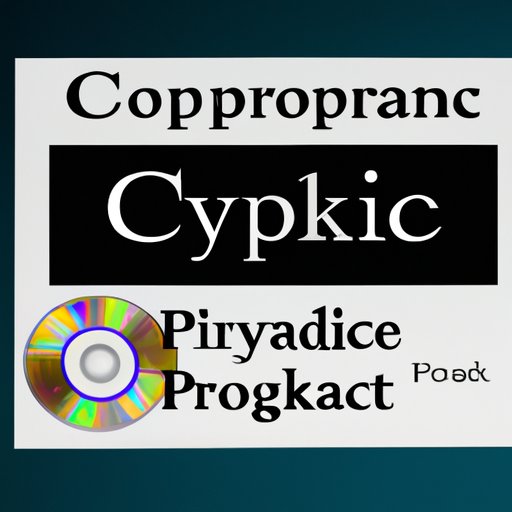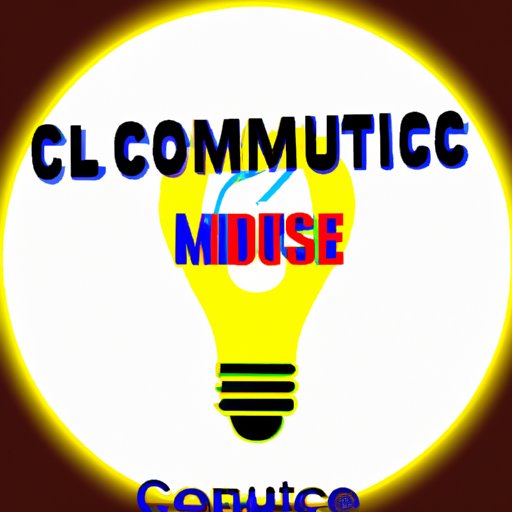Introduction
Finding music for YouTube videos can be a daunting task. With copyright laws and ever-changing digital media regulations, it can be difficult to know where to start. The purpose of this article is to provide an overview of the different ways you can get music for your YouTube videos, from using royalty-free music libraries to creating your own original music.
Use Royalty-Free Music Libraries
One of the easiest and most cost-effective ways to get music for your YouTube videos is to use royalty-free music libraries. These libraries offer a wide selection of pre-cleared music that can be used in your videos without having to worry about copyright infringement. There are several benefits to using royalty-free music libraries, including the ability to find high-quality music quickly and easily, as well as the assurance that the music you’re using is fully legal.
There are many different places to find royalty-free music libraries, including online marketplaces such as AudioJungle and Pond5, as well as subscription services like Soundstripe and Musicbed. It’s important to do your research and find a library that offers the type of music you’re looking for at a price you’re comfortable with.
Once you’ve found the right royalty-free music library for your needs, it’s easy to download and use the music in your YouTube videos. Most libraries will provide instructions on how to do this, but the basic process is typically the same: select the track you want to use, purchase a license (if required), download the track, and then upload it to your YouTube video.

Purchase Licenses for Copyrighted Songs
If you’re looking to use a popular song or artist in your YouTube videos, you may need to purchase a license in order to do so legally. This process can be complicated and time-consuming, but it is possible to obtain the necessary permissions to use copyrighted music in your videos.
The first step is to identify who owns the rights to the song or artist you’d like to use. This information can usually be found on the artist’s website or through a music licensing database such as SongFreedom or Rightsify. Once you’ve located the copyright holder, you can contact them directly to inquire about obtaining a license.
The cost and terms of the license will vary depending on the song or artist you’re looking to use, so it’s important to do your research and make sure you understand what you’re signing up for. Additionally, some copyright holders may require you to submit a copy of your video for approval before granting you a license, so be sure to factor this into your timeline.
Record Your Own Original Music
If you’re a musician or have access to musical equipment, you may want to consider creating your own original music for your YouTube videos. This option is great if you’re looking for something unique or specific that you can’t find in existing music libraries.
To record your own music, you’ll need access to a recording studio and/or the necessary equipment to produce the tracks you need. This could include instruments and audio production software, as well as microphones, amplifiers, and other sound equipment. You’ll also need to have some knowledge of music theory and composition in order to create the type of music you’re looking for.
Once you’ve created your original music, you’ll need to upload it to your YouTube video. This can be done through the YouTube Audio Library or by uploading the file directly to the video. Be sure to list yourself as the composer and provide any additional information that might be needed, such as the name of the piece and the name of the recording studio.
Collaborate With Independent Musicians
Another option for getting music for YouTube videos is to collaborate with independent musicians. This is a great way to get access to unique and original music without having to go through the hassle of recording it yourself. Plus, working with independent musicians can be a great way to build relationships and expand your network.
You can find independent musicians on sites such as Bandcamp and SoundCloud, as well as through social media platforms like Twitter and Instagram. Once you’ve identified a musician you’d like to work with, reach out to them to discuss potential collaborations. Many independent musicians are open to the idea of working with video creators, so don’t be afraid to ask.
Before you collaborate with an independent musician, be sure to discuss the terms of the agreement. This should include how the music will be used, who will own the rights to the music, and how royalties will be split. Having these details ironed out ahead of time will help ensure that both parties are on the same page.

Find Creative Commons Licensed Music
Finally, another option for getting music for YouTube videos is to find Creative Commons licensed music. Creative Commons is a non-profit organization that provides copyright licenses for creators to share their work freely. Under a Creative Commons license, other creators can use, remix, and share the work as long as they give credit to the original creator.
There are several websites that offer Creative Commons licensed music, such as Jamendo, Free Music Archive, and ccMixter. When searching for music, be sure to pay attention to the type of license associated with the track, as some may require attribution or even prohibit commercial use.
Once you’ve found the right track, you can download it and use it in your YouTube videos. Be sure to follow the requirements of the license and provide proper attribution when necessary.
Conclusion
Getting music for YouTube videos can be a challenge, but there are several options available. From using royalty-free music libraries to purchasing licenses for copyrighted songs, recording your own original music, collaborating with independent musicians, and finding Creative Commons licensed music, there are plenty of ways to get the music you need for your videos.
(Note: Is this article not meeting your expectations? Do you have knowledge or insights to share? Unlock new opportunities and expand your reach by joining our authors team. Click Registration to join us and share your expertise with our readers.)
